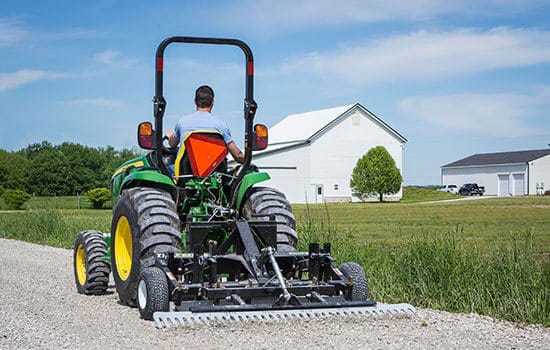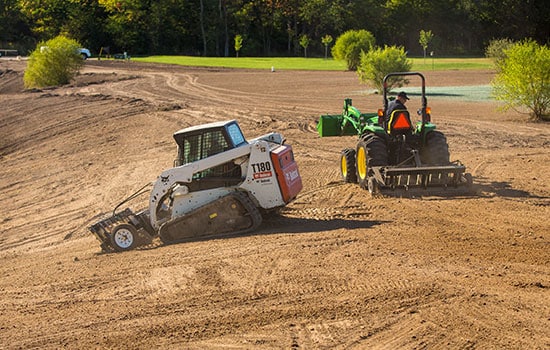Water Trailers Designed With You in Mind – ABI Dirt
What Makes our Water Trailers the Best in the Industry?
Over the past few episodes, we’ve been talking about water around your arena and around your property. But what makes ABI water trailers better than the rest? It all comes down to the design: We design our water trailers with land, arena, and livestock owners in mind.
ABI Products Shown In This Video
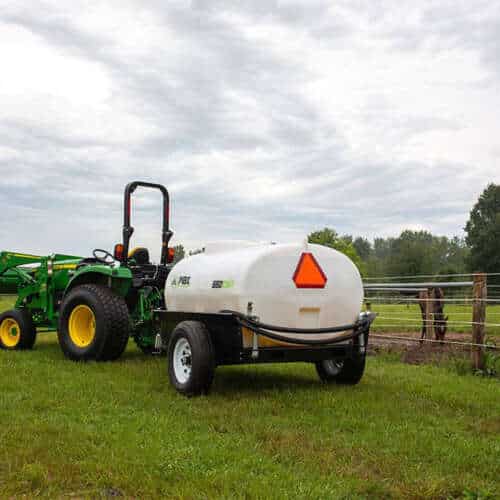
550 Gallon Compact Water Trailer
- Starting At: $195/mo.*
- Farm Use: Compact Tractor
- Min. Vehicle Weight: 2,400 lbs. On Flat Ground, Towing Capacity 5,200 lbs. On Uneven Terrain
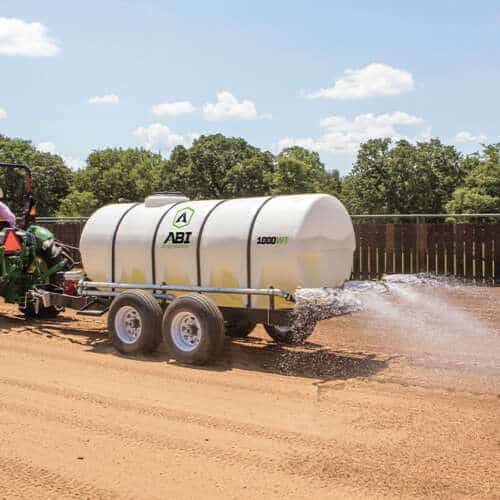
1000 Gallon Water Trailer
- Starting At: $365/mo.*
- Farm Use: Large Tractor or 3/4-Ton Truck
- Min. Vehicle Towing Capacity: 10,200 lbs., Dual Axle, Commercial Platform
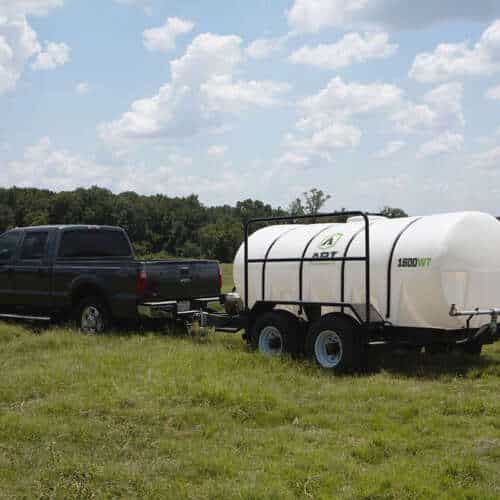
1600 Gallon Water Trailer
- Starting At: $568/mo.*
- Farm Use: Large Tractor or 1-Ton Truck
- Min. Vehicle Towing Capacity: 16,020 lbs., Dual Axle, Commercial Platform
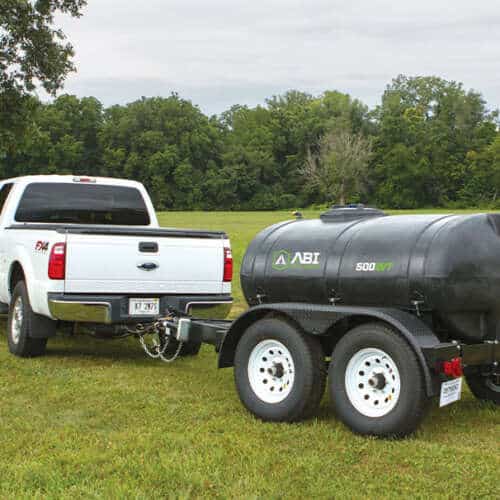
Potable Water Trailers
- Starting At: $247/mo.*
- 500, 1000, & 1600 Gal. Available
- On-Road or Off-Road
Transcript
Hi, everyone, Matt here with ABI attachments. Welcome back to another episode of the “ABI Dirt.” You can see that we stepped out from behind the studio and jumped right here into the shop floor. For the past couple of weeks, we’ve been talking about water as a tool, water as a tool in your arena to help keep your horse safe by getting the soil materials to bind together well in your arena, and also water as a tool around your property for all of those hard-to-reach places that a hose just quite can’t go. And in the past two episodes, I have been promising that we would take some time, take a closeup look at the compact water trailers we’ve got here and talk through how we’ve designed these specifically with you in mind, because this wasn’t just something we threw together. The engineers that worked on these water trailers that are back there, the office is back that direction, we stopped and we paused and we thought through what do you need, what would be most helpful for getting water as a tool around your property, right where you need it? And we’ve got a couple of key things I want to point to that might be useful to you. Let’s take a look.
Single Axle and Double Axel Water Trailers
So here in the shop with us, we’ve got both the 340 gallon water trailer as well as the 550 gallon water trailer. These are our compact water trailers, single axle, non-DOT. If you want to jump up to the DOT, a little bit heavier duty, you’ve got the 500, 1000, and 1,600 gallon DOT models available. We’ll leave those out of the shop for right now. This is what we’ve got here to talk about. When it comes to specific features, I’ve got five things I wanna point out, specific features that we do a little bit differently than everyone else because we think it’s better for you. We think it’ll be helpful to you, rather than just slapping something on a trailer.
Elliptical Water Tank
I wanna take a look at the 340 first, because in the 340 gallon compact water trailer especially, you can see that we opt for an elliptical, an elliptical water tank as opposed to a round tank or a square tank. I know you can get square tanks readily available and drop them onto a flatbed trailer, right, or round tanks are really common as well. We opt for the elliptical tanks, especially on these compact water trailers, two reasons for that. One is not only are they easier to see over, but they’re also easier to work with. You can see that by standing here, right at the front of the trailer with the motor and pump that you’ve got both the autofill valve within easy reach, and I’ll get to that in just a second, but you also have the primary tank lid that, if you open that up, it is very easy to quickly dump large amounts of water if you have on your property kind of a larger water storage tank or a large water tower.
Another reason we like to opt for the elliptical tank is because it lowers your center of gravity, and that’s a whole lot safer. Depending on what tow vehicle you’ve got, if you’ve got, again, an ATV, a UTV, or if you’re looking for something a little bit bigger, a compact or subcompact tractor, having that weight low to the ground so you’re not top heavy and things aren’t splashing around, especially if you’ve got any kind of hills or undulations near property, depending on what your terrain is like, it’s a whole lot safer to keep that weight squat and lower to the ground. So that’s why we prefer the elliptical tank as opposed to something bigger and grander.
Tow Behind Water Tank With Pump
Another feature on these elliptical tanks that we prefer, again, we hunted this down specifically for you is that these are sump-bottom tanks. So they’re not flat bottom, it actually has the ability to be a full-drain tank. It’s easier, actually, to see, it’s the right side over here on this 550. You can see this galvanized angle coming out of there, and there’s actually a ball valve there. It hangs out underneath the water trailer, tucked back away so it’s not gonna get banged on anything. The plumbing goes back up to a sump in the bottom of this elliptical tank. That means you’ve got a full-drain tank standard on all of ABI’s water trailers.
Full-drain Water Trailer
Now, if you’re curious, the reason that full-drain tanks are so rare out on the market, is that a full-drain tank with a sump in the bottom of it requires a custom-built trailer. As you can imagine, a tank, if it has a sump in the bottom portion of it, it’s not gonna sit steady. You’re gonna have a teeter totter action on a flatbed trailer. Here at ABI, we have custom built the trailers that the water tanks sit on. So we have complete control over the durability of the frame. We’re not using somebody else’s trailer frame that could have other purposes. We’ve custom built it to be durable but then also to safely and securely house that custom tank with that sump in the bottom. Some of you have had to endure either A, mucky, nasty water in the bottom of water tanks and trailers or you’ve actually had to go through the steps necessary to unstrap or unpin or unfasten the tank so you can pull the tank off the trailer, turn it upside down, and somehow find a way to jack it up to spray it out. That’s the only option you’ve got when it comes to cleaning a tank that has a flat bottom. And the output hole on that tank is a couple inches up off the bottom, you’re always gonna have muck. There’s no great way to clean a flat-bottom tank, which is why we opt for a sump-bottom tank with a full-drain feature so you can stand up top. When it comes to spraying it out, you can climb up, spray in, have that valve open, and you’re draining all of that gunk all of the way out of the trailer.
Water Trailer Valves and Spray Capabilities
Got three more aspects of our water trailer and how we’ve designed it specifically with you in mind. First up, this is a ratcheting valve that is connected to the plumbing that controls the water flow from your rear spray bar in this tank. Something that a lot of you have around your property that you may not want is a puddle, two puddles to be exact, right at either end of your arena. See, typically, when you are using a water trailer to put down water onto your arena footing, as you’re going down the middle of the arena, it’s no problem. You can see the stripes. You can see where you’ve already been. But as you get to the end of your arena, every time you make a loop, every time you turn around, you’re putting more water on top of the end of that footing, on top of the end the arena where you’ve already put water down. But if you have an ABI water trailer with that ratcheting valve that you can turn off your rear spray bar, every time you get to the end of your arena, you can grab that rope, give it a good pull, turn the water flow off, get your water trailer turned around, and turn the water flow back on as you head back down the arena.
Water Trailer Recirculation Valve
Now I know we get some raised eyebrows on that last one, because I just said that you can stop the flow of water when that motor and pump are flowing. And some of you are a little bit concerned that I forgot about the problem of deadheading a pump. And you’re right, that is a major problem normally. In most plumbing systems, if you stop the water somewhere, but the motor and pump are going, you’re gonna deadhead that pump, you’re gonna have problems. But it’s not a problem on an ABI Attachments water trailer, because we’ve given you a recirculation valve. There is a ball valve right here, quarter turn, right across the top of the pump, which allows water to go back into the tank. So as long as that valve is at least partially open, when you start up this motor and pump, you can get water flowing, you can have your spray hose turned off, you can have your rear spray bar turned off, no worries about damaging the engine, because the water has a place to go. The other benefit is the control it gives you over the flow rate of water out of your water trailer. The combination of your recirculation valve and the flow rate chart here on the front of the tank means that you can take a look, understand how much water your water trailer can put out and then decide what is right for you and your application and dial it in.
Water Tailer Auto-shutoff Fill
Last feature I want to highlight today, and this is specifically for some of you who have brought this comment up before, you say, “Matt, the idea of a water trailer is great. It just would take so long for me to fill it. I’m working off of a well system. I don’t have a water right near or around my property where I can go use the pond-fill feature that you’ve got on these water trailers, so I’m reduced down to a three-quarter inch garden hose. That’s a pain in the rear. I don’t want to have to sit and watch that thing. It’s gonna overflow. I’m gonna waste the water that I’ve got.” And we hear you, which is why on all of our water trailers here at ABI Attachments, we have an auto-shutoff fill on top of these tanks, which means down inside this tank on the other side of this bulkhead fitting here, you’ve got a ball fitting. So you hook up your garden hose, go to bed, rest easy, get a good night’s sleep from working so hard. You come out the next morning, as the tank has filled up, it’s pushed that ball up, which has turned off the flow of water, so you don’t have water gushing everywhere. Turn off your water, unhook the hose, now you can go take care of the property, take care of the arena, get done what you need to get done. You didn’t have to think twice about monitoring the filling of this tank. Makes your life a lot easier and helps you get your work done faster.
That’s all I’ve got today, everyone. If you’ve additional questions, like, why we decided to incorporate plumbing in through the trailer and what are the different axle options, and why is your tongue on this trailer all wrapped up and sitting behind the plumbing? Those are all great questions. Remember, we’ve got a team of product specialists who are available for you to answer those kinds of questions. So give us a call. We’d love to work with you to help you get your work done. But until next time, take care, stay cool, see you next time.

